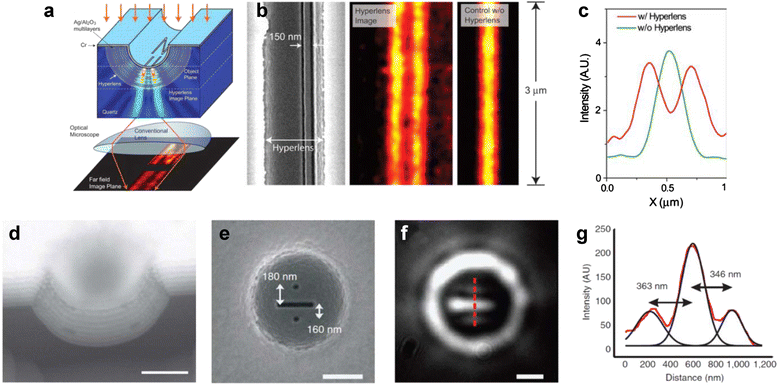
연구
Research Outcome
미래를 창조하는 포스텍 화학공학과
Metamaterials and imaging
- Title of paper
- Metamaterials and imaging
- Author
- [노준석교수 연구실]
- Publication in journal
- Nano Convergence 2(22), pp1~16 (November 2015)
- Publication date
- 20151109
[ Abstract]
Resolution of the conventional lens is limited to half the wavelength of the light source by diffraction. In the conventional optical system, evanescent waves, which carry sub-diffraction spatial information, has exponentially decaying amplitude and therefore cannot reach to the image plane. New optical materials called metamaterials have provided new ways to overcome diffraction limit in imaging by controlling the evanescent waves. Such extraordinary electromagnetic properties can be achieved and controlled through arranging nanoscale building blocks appropriately. Here, we review metamaterial-based lenses which offer the new types of imaging components and functions. Perfect lens, superlenses, hyperlenses, metalenses, flat lenses based on metasurfaces, and non-optical lenses including acoustic hyperlens are described. Not all of them offer sub-diffraction imaging, but they provide new imaging mechanisms by controlling and manipulating the path of light. The underlying physics, design principles, recent advances, major limitations and challenges for the practical applications are discussed in this review.
DOI: 10.1186/s40580-015-0053-7




